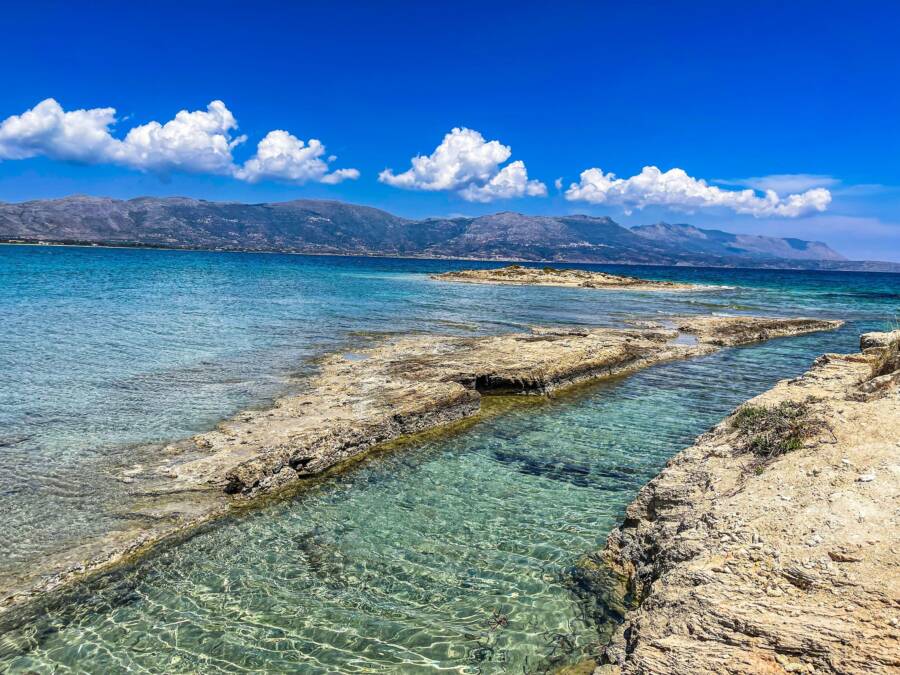Pavlopetri, Greece: One Of The Oldest Underwater Cities Ever Found

PitK / Alamy Stock PhotoPavlopetri is submerged just off the shore of the Peloponnese peninsula in southern Greece.
In 1967, marine geo-archaeologist Nicholas Flemming discovered ruins off the coast of Laconia in Greece. A year later, a team of archaeologists from Cambridge University set out to explore Flemming’s discovery — and mapped out an entire underwater city known as Pavlopetri.
Initially, Flemming and others dated the ruins to the Mycenaean period (1600 to 1100 B.C.E.). However, in the years since, experts have discovered evidence that Pavlopetri is even older, dating back to around 3500 B.C.E.
Pavlopetri was once a thriving harbor town. Some 5,000 years ago, when Western civilization was still in its infancy, experts believe its ports dominated the Mediterranean. It had incredibly well-designed roads, temples, and homes, all showing a planned city unrivaled by many others of its time.
For around 2,000 years, Pavlopetri thrived — and then, suddenly, it was gone. Around 1000 B.C.E., a great earthquake shook the town, pulling it into the sea. It never re-emerged, and with that, the ancient seaport was lost to time.
Today, the sunken city’s ruins offer incredible insight into its past. Archaeologists have uncovered streets, the foundations of at least 15 buildings, courtyards, and a water management system complete with channels and terracotta pipes.
It was a city unlike any other — one that some believe may even have been the inspiration behind Atlantis itself.





